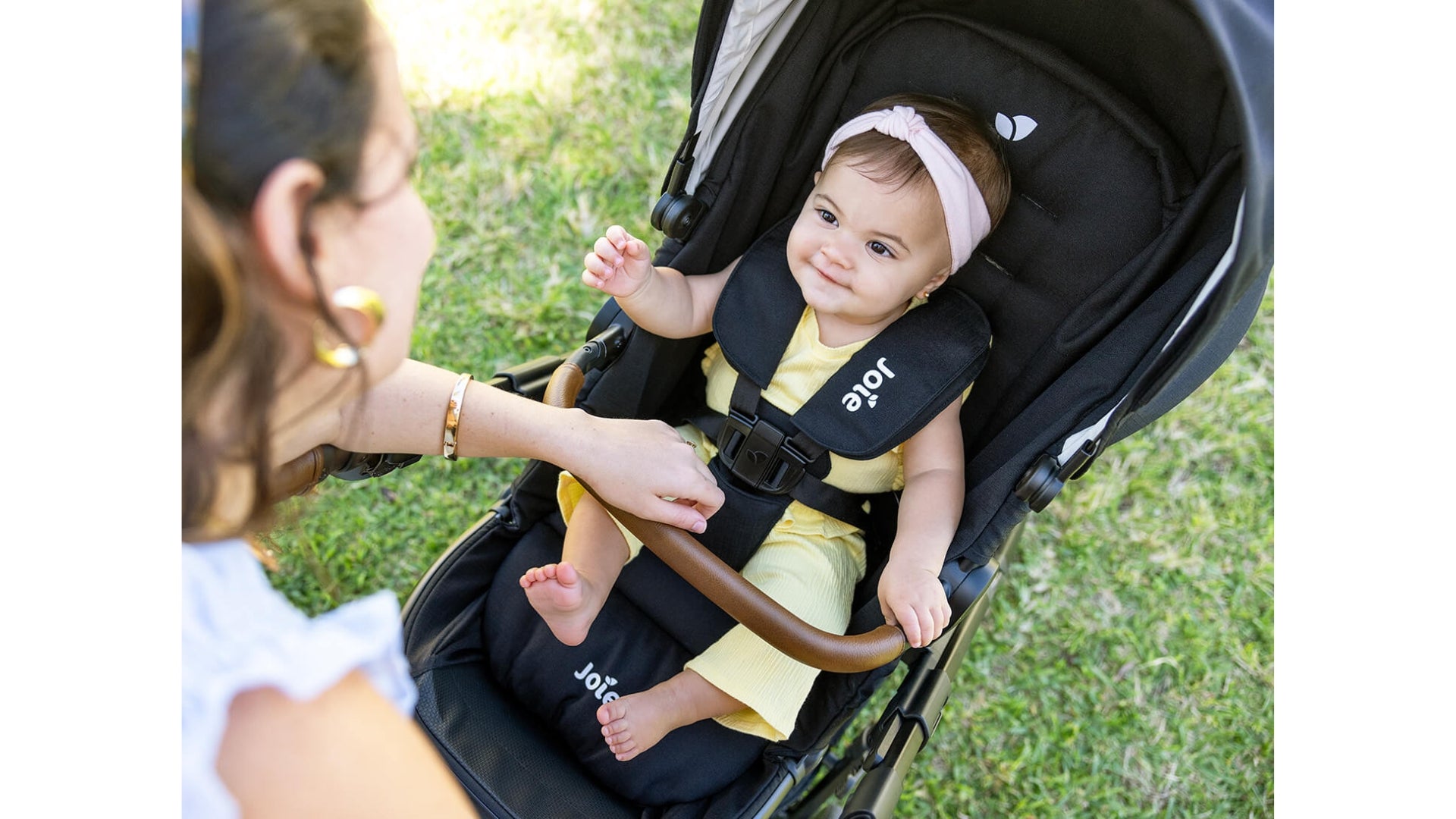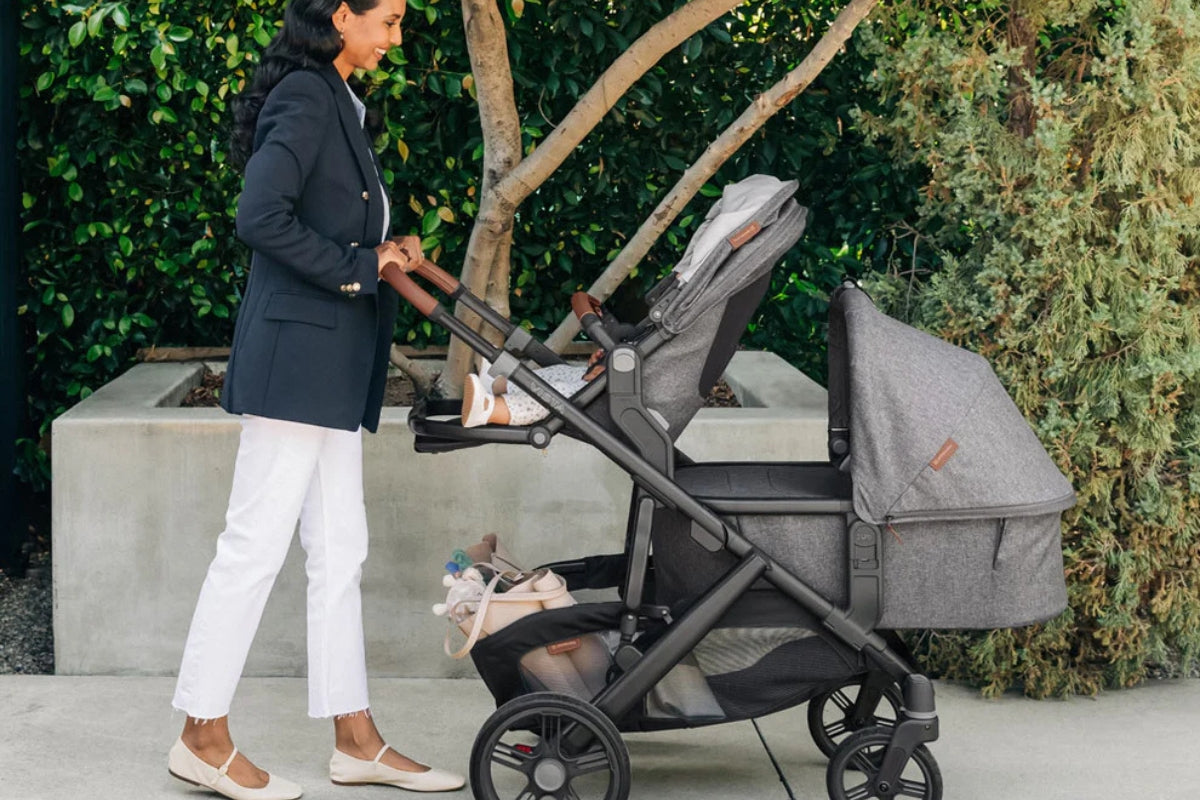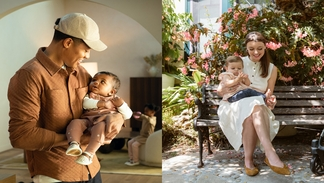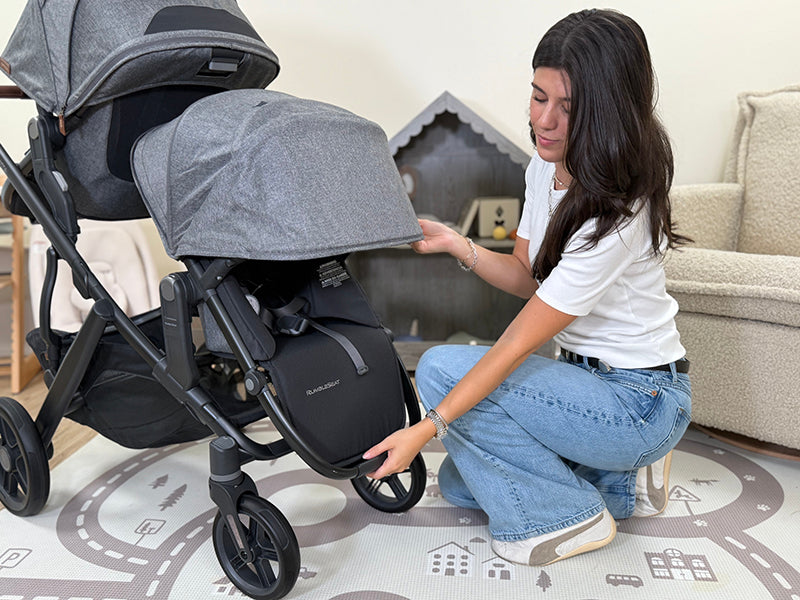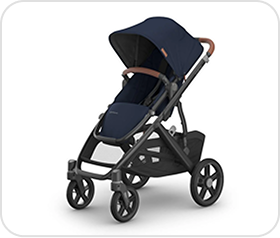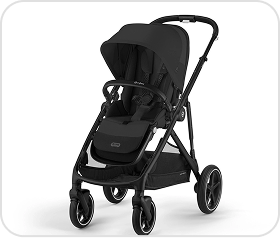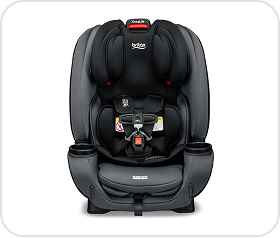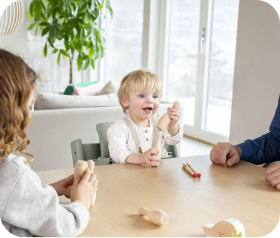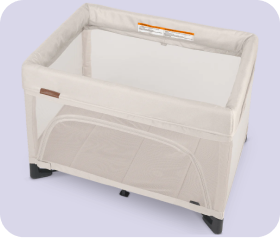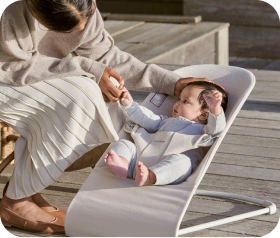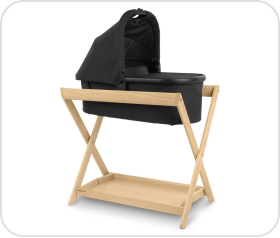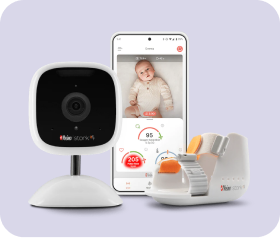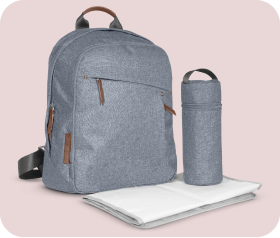
10 Benefits of Babywearing (That Go Way Beyond Convenience)
Babywearing—the practice of carrying your baby in a wrap, sling, or carrier—has been around for centuries. Across cultures, parents have always relied on the comfort and practicality of keeping their little ones close. And today, parents are embracing it for the same reasons, and then some: the benefits go way beyond convenience. From calming fussy babies to supporting healthy development, babywearing can make the early months feel a little more doable and a lot more connected. It’s a small sanity-saver for a parenting stage that doesn’t exactly come with a manual.
Whether you’re deep in the fourth-trimester haze or juggling life with a baby and a toddler, here are 10 reasons a carrier might be your baby gear MVP.
Babies Cry Less When They’re Worn
Fact: carried babies tend to cry less. A study published in Pediatrics found that wearing your baby for about three hours a day reduced crying by 43% overall—and by more than half during those witching-hour meltdowns.
Why it works: babywearing keeps your little one snug and helps you respond quickly to their cues. Researchers call it proximal care (you’d probably call it survival mode). Whatever the name, it’s a proven recipe for calmer babies and more peaceful evenings.
Babywearing Strengthens Bonding and Attachment
Babywearing is basically bonding made easy. Keep your baby close enough to feel your heartbeat and boom! Suddenly you’re fluent in newborn. Rooting means hungry. Yawn means tired. That squirm? It's probably time for a new diaper. Responding to those cues helps your baby feel secure, and that sense of security sets them up to explore the world with confidence later on.
The payoff lasts long after the newborn stage. Babies who feel safe in your arms today often grow into curious, confident kids who see the world as something worth exploring and not something to fear.

Hands-Free Parenting (aka, You Can Eat Again)
Babies want to be held constantly. Your inbox, laundry, and dirty dishes do not care. Babywearing is how you meet in the middle. It can be the difference between one-handedly buttering toast and actually eating breakfast. Between bouncing a fussy baby and walking the dog. Between “I can’t do anything” and “Watch me (semi) cruise through this to-do list.”
And sometimes “hands-free” just means scrolling your phone or staring blankly at your fridge, incapable of deciding what's for dinner. That counts too! The point is you’re still close, still connected, and slightly more functional than you were 15 minutes ago.
Babywearing Encourages Kangaroo Care
You’ve probably heard of kangaroo care—the fancy term for skin-to-skin contact that helps babies regulate everything from heart rate to body temperature. It’s a NICU essential for preemies, but full-term babies love it too.
Babywearing makes it easy to sneak in more of that closeness without camping out on the couch for hours. You can get the same bonding benefits while folding laundry, answering emails, or finally eating that lunch you forgot about two hours ago.
Skin-to-skin contact through babywearing can help your baby:
-
Steady their breathing and heart rate
-
Regulate body temperature
-
Improve digestion and weight gain
-
Sleep longer and more soundly
-
Feel calmer and less stressed
Translation: it’s science-backed cuddling, and your baby’s nervous system will thank you for it.

Babywearing Supports Breastfeeding Success
Babywearing and breastfeeding go together like coffee and… more coffee. Keeping your baby close makes it easier to catch those early hunger cues—the rooting, the wiggles, the “I’m about to lose it” pre-cry faces—so you can respond before things escalate.
Carriers can also offer a little privacy and keep your baby from getting distracted while feeding in public. Bonus: all that contact releases oxytocin and prolactin, hormones that support milk production and let-down. In short, more closeness often means a nursing journey that feels less like an endurance sport.
When your baby’s finished, just return them to an upright position and make sure their chin isn’t tucked into their chest. (No milk coma slouching, as cute as it is.)
Helps with Colic and Reflux Symptoms
Colic and reflux can make early parenthood feel like one long loop of pacing, bouncing, and praying for burps. While babywearing won’t cure it, it can take the edge off for everyone involved.
Here’s how it helps:
-
Upright position: Gravity does its job and keeps things down where they belong.
-
Gentle pressure: The snug fit can help trapped air escape.
-
Soothing motion: Your daily steps double as built-in rocking.
And maybe best of all? It saves your arms during those middle-of-the-night marathon soothing sessions. Your carrier does the heavy lifting while you hold onto your sanity.

Babywearing Boosts Maternal Mental Health
Those early months can feel like an emotional triathlon—exhaustion, isolation, and the occasional existential crisis all competing for attention. Babywearing can’t fix that, but it can help.
Skin-to-skin contact releases oxytocin, the same hormone behind that post-hug calm or the rare uninterrupted shower. Carried babies also sleep more, which—shocking no one—helps parents feel better too.
Even the smallest wins matter: walking the dog, unloading the dishwasher, or watching a show with your baby snoozing on your chest. Babywearing isn’t a cure-all, but it’s a comforting reminder that you’re still a person, not just a 24-hour snack bar.
Reduces the Risk of Flat-Head Syndrome
Newborns spend a lot of time on their backs, which can lead to flat spots on the head (positional plagiocephaly). Babywearing gives their little noggins a break.
When your baby naps upright in a carrier, their head position shifts naturally, reducing constant pressure on one spot. It’s an easy way to add variety without setting a tummy-time timer or rearranging pillows.
Just remember: while babywearing is great for awake time, the AAP still recommends a flat, firm surface for sleep. During the day, though, a carrier keeps your baby close (and helps you skip one more thing to worry about).

Supports Healthy Development
Yes, babywearing is convenient. But it’s basically developmental cross-training too. The constant gentle motion stimulates your baby’s balance and coordination, while the upright position strengthens core and neck muscles.
They’re also getting a front-row seat (okay, technically chest-row) to the world at your level—watching, listening, and learning how everything fits together. It’s sensory play in motion, no foam mat or Montessori-inspired toys required.
Encourages Social Learning and Early Language Skills
Babies are natural observers. When they’re worn at your level, they’re part of the conversation, watching facial expressions, hearing your tone of voice, and picking up the rhythm of real life.
That running commentary you give while grocery shopping? Language development. That smile exchange with the barista? Social skills. Those constant “who’s a tired baby?” monologues? Brain-building gold.
Babywearing puts your little one right in the mix, where learning happens best: close to you.

Babywearing FAQs
Is babywearing safe for newborns?
Yes—when done correctly, babywearing is safe from day one. Choose a carrier designed for infants, make sure their face is visible, their airway is clear, and their chin isn’t tucked into their chest. Think snug hug, not slump.
What’s the best baby carrier for dads?
Any carrier that fits comfortably and doesn’t make you feel like you’re strapping into a parachute. Structured styles with buckles and lumbar support are popular, but wraps and slings work too. The best one is the one you’ll actually use.
Can I breastfeed while babywearing?
You can—and many parents do. Carriers make it easier to spot hunger cues and nurse on the go. Just be sure to reposition your baby upright afterward and keep their face clear while feeding. They also provide coverage if nursing in public makes you less than comfortable.
How long can I wear my baby in a carrier?
As long as you’re both comfortable. Newborns may prefer shorter sessions, while older babies and toddlers can hang out for longer stretches. Check the weight limits on your carrier and take breaks to stretch and reset.
Does babywearing cause hip dysplasia?
No—when positioned correctly, babywearing supports healthy hip development. Look for that “M” shape: knees higher than the bottom, thighs supported, legs wrapped naturally around your torso. The International Hip Dysplasia Institute recommends carriers that support the thighs rather than letting little legs dangle straight down.
Have More Baby Carrier Questions?
Babywearing isn’t about doing things perfectly—it’s about finding what makes life with a tiny human a little easier (and a lot more hands-free). The best carrier is the one that fits your lifestyle, your body, and your baby’s stage—whether that means long walks, short naps, or surviving the witching hour with dignity intact.
At Strolleria, we’ve curated a selection of carriers that are safe, supportive, and genuinely worth using—because baby gear should make life simpler, not add to your returns pile. Have more questions? Reach us anytime at cs@strolleria.com.




